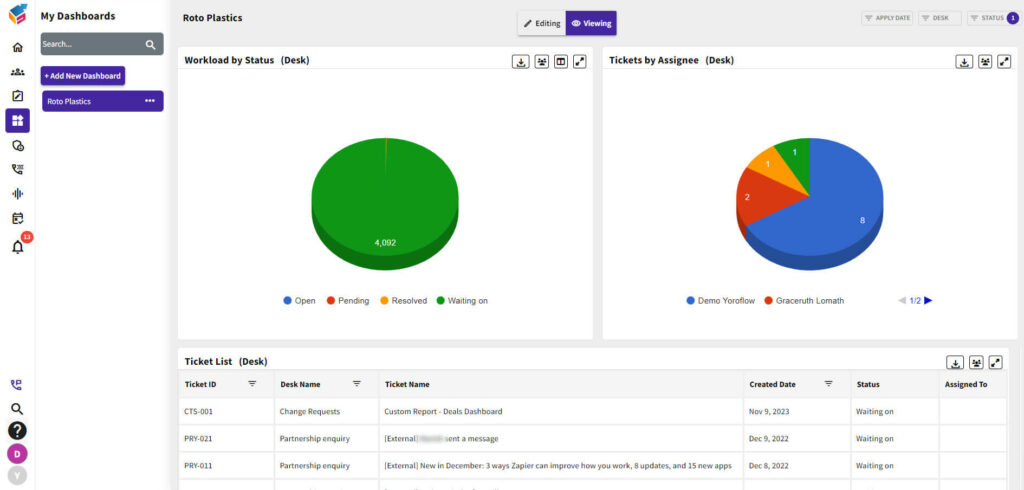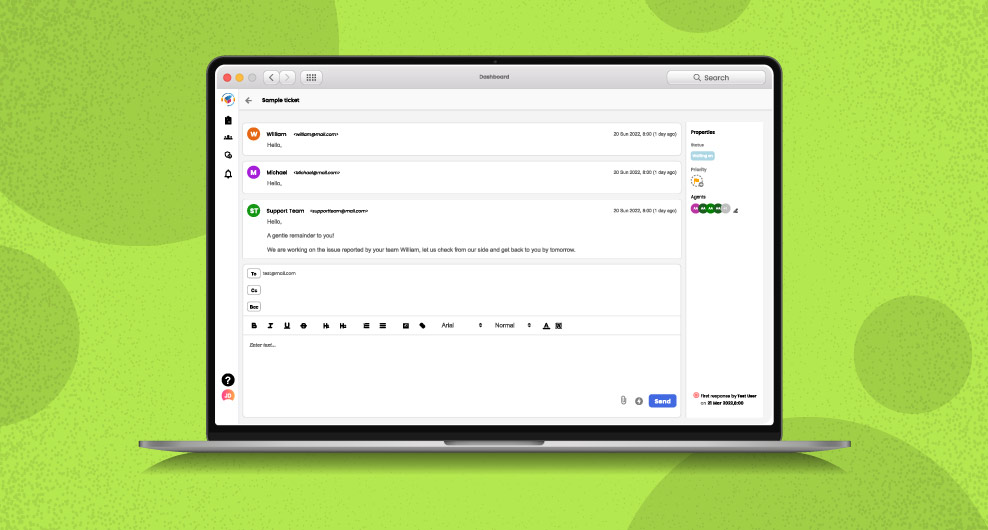Table of Contents
Are you looking for ways to improve your business’s customer satisfaction and retention rates?
In this post, we explore the importance of gathering and analyzing customer feedback and provide practical tips and strategies for building a robust user feedback loop that will help you better understand and meet your customers’ needs.
What is Customer Feedback Loop?
Customer feedback is a valuable source of information for businesses, providing insights into how customers perceive their products or services. However, collecting feedback is only one part of the equation. To truly leverage its potential, businesses must take the next step and close the client feedback loop.
Closing the feedback loop means acting based on the feedback received, whether it’s implementing changes to address areas for improvement or highlighting positive feedback to reinforce good practices. By doing so, businesses demonstrate that they are actively listening to their customers and taking their opinions into account.
Why is Customer Feedback Loop Important?
Customer feedback loop is important for several reasons:
- Improving Customer Satisfaction: Feedback loops allow businesses to identify areas where they may be falling short in meeting customer needs or expectations. By acting on customer feedback, businesses can improve their products or services and better meet the needs of their customers, leading to increased customer satisfaction.
- Identifying Opportunities for Growth: Customer feedback can also help businesses identify new areas for growth and innovation. By listening to customer feedback, businesses can identify unmet needs or areas where their products or services could be improved, leading to new opportunities for growth.
- Enhancing Product Development: Feedback loops allow businesses to gather insights and ideas for product development. Customer feedback can help businesses identify what features or improvements customers are looking for, which can inform product development and lead to better products.
- Building Stronger Customer Relationships: By actively seeking and responding to customer feedback, businesses can demonstrate their commitment to customer satisfaction and build stronger relationships with their customers. This can lead to increased customer loyalty and repeat business.
How to Close the Customer Feedback Loop: 7 Best Practices
Closing the customer feedback loop is an essential process for any business that wants to improve its products or services based on customer feedback. Here are seven best practices that can help you effectively close the feedback loop:
- Encourage Feedback: The first step in closing the feedback loop is to encourage your customers to provide feedback. Provide various channels for feedback, such as surveys, social media, customer service, and online forums.
- Analyze Feedback: Once you receive feedback, it’s essential to analyze it to identify patterns and themes. You can use data analytics tools to gather insights and identify areas for improvement.
- Prioritize Feedback: Not all feedback is equally important, so it’s essential to prioritize feedback based on its impact on the customer experience and your business goals.
- Take Action: After identifying the feedback and prioritizing it, take action to address the issues raised. This can involve implementing changes to products or services, improving customer service, or addressing any other concerns.
- Communicate Changes: After taking action, it’s crucial to communicate the changes made to customers. This demonstrates that you have listened to their feedback and have taken steps to address their concerns.
- Follow Up: Following up with customers who provided feedback is a critical step in the feedback loop. It allows you to demonstrate that you value their opinion and are committed to improving the customer experience.
- Continuously Improve: Finally, it’s important to continuously improve the feedback process itself by collecting feedback on the feedback process and adjusting as needed.
Closing the customer feedback loop requires a commitment to listening to customers, acting on their feedback, and communicating the results. By following these best practices with customer service software, you can effectively close the feedback loop and improve the customer experience.
The Benefits of Having a Customer Feedback Loop
Having a customer feedback loop can bring numerous benefits to a business, including:
- Improving Customer Satisfaction: Feedback can help businesses identify areas for improvement in their products or services, leading to higher customer satisfaction.
- Enhancing Customer Loyalty: By actively listening to customer feedback and making changes based on their input, businesses can build stronger relationships with their customers, leading to increased loyalty.
- Increasing Sales: Satisfied customers are more likely to become repeat customers and recommend a business to others, which can lead to increased sales and revenue.
- Improving Product/Service Quality: Feedback can help businesses identify and address issues with their products or services, leading to higher quality offerings.
- Differentiating from Competitors: A business that actively seeks and responds to customer feedback can stand out from its competitors and differentiate itself in the market.
- Providing Valuable Insights: Feedback can provide valuable insights into customer needs, preferences, and trends, which can inform product development and marketing strategies.
- Building Brand Reputation: By demonstrating a commitment to listening to and addressing customer feedback, businesses can build a positive reputation and establish themselves as customer-focused and responsive.
Final Touch
Building an effective customer feedback loop is a crucial aspect of any successful business. By implementing best practices and strategies, businesses can collect and act on customer feedback to improve their products or services, identify opportunities for growth, and build stronger customer relationships.

Some key best practices for building an effective customer feedback loop include:
- Identifying the right feedback channels for your customers
- Actively soliciting feedback from customers
- Responding to feedback in a timely and personalized manner
- Analyzing and interpreting feedback to identify areas for improvement
- Acting on feedback to make meaningful changes to products or services
- Continuously monitoring and iterating on the feedback loop to ensure it remains effective.
By following these best practices and using technologies such as customer support software, gathering customer insights, and prioritizing customer experience, businesses can build a strong customer feedback loop that drives success and growth over time.




